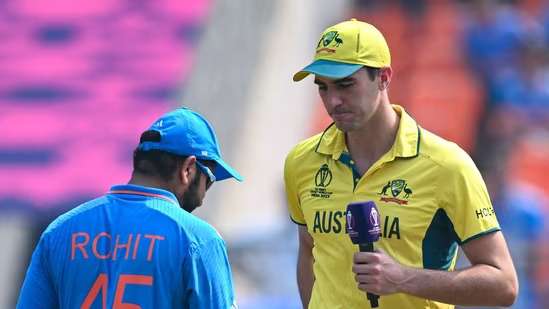
In a strategic move that significantly contributed to their victory, Australia won the toss and elected to bowl first in the 2023 World Cup final against India. This decision played a crucial role in their triumph, as they outperformed India both with the bat and the ball, ultimately securing a commanding six-wicket win. Let’s delve into the insights shared by opener David Warner on the decision-making process and how it influenced the outcome.
Pre-match Dilemma: To Bat or to Bowl?
Despite India’s home advantage and their dominant run in the lead-up to the final, Australia’s decision to chase after winning the toss proved instrumental. Warner revealed that the team had contemplated batting first the night before the final but underwent a change of plan on the match day itself. In a candid conversation with South African legend AB de Villiers on his YouTube channel, Warner disclosed, “All the stats coming through were saying, bat first and put runs on the board. But for once, when we got asked that question, I think a majority of us said let’s just chase.”
Tactical Considerations: Understanding Conditions for Success
Warner emphasized the team’s focus on thoroughly understanding the playing conditions before stepping out to bat. The consensus was that a strong bowling performance would set the stage for a successful chase. “If we bowl well and understand the conditions like that, we can then chase and then anchor,” Warner explained. This strategic approach aimed to capitalize on a comprehensive understanding of the pitch and weather conditions.
The Match Unfolds: India’s Struggle and Australia’s Dominance
India, batting first, were restricted to 240 runs, with Australia effectively stifling their momentum after an initial burst of 80 runs in the first 10 overs. In response, Travis Head and Marnus Labuschagne forged a formidable 192-run partnership, sealing the victory for Australia. Head’s explosive 137 off 120 balls and Labuschagne’s unbeaten 58 off 110 balls showcased the effectiveness of Australia’s revised game plan.
Warner highlighted the significance of Labuschagne’s innings, drawing parallels to India’s performance in the tournament’s first game. He praised Labuschagne for executing the team’s strategy perfectly, noting that the best batters thrive when they know the target and can control the game’s tempo.
Cummins’s Leadership and Stellar Bowling
Warner commended Pat Cummins for his exceptional leadership throughout the tournament and his impactful spell in the final. Despite facing criticism earlier for fielding placements and a slow start, Cummins proved his mettle by taking crucial wickets, including those of Shreyas Iyer and Virat Kohli. “Yesterday was unbelievable the way he bowled. That was his best spell in the entire tournament. The great players stand up when it’s time to deliver, and yesterday he did that,” Warner expressed.
In retrospect, Australia’s decision to bowl first, coupled with Cummins’s stellar performance, emerged as a pivotal factor in their historic sixth World Cup victory. The strategic shift showcased the team’s adaptability and their ability to thrive under pressure, ultimately securing their status as cricketing champions.



